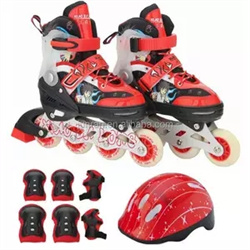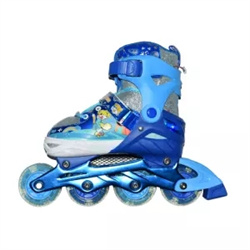Roller skate introduction
![]()
Roller skating (Roller skating), commonly known as roller skates, originated in the Netherlands. It is a competition event that uses special roller skating as a competition tool, and it is also a life and leisure thing. Most skaters today mainly use inline skating, also known as skating. (The nickname for inline skating enthusiasts for this sport comes from the sound made by the wheels rubbing against the ground in skating. Skates are also called “brushes” and skating on the road is called “street brushing”).












The role and benefits of roller skates
1. Enhance physical coordination and balance
Roller skating is beneficial to the body’s balance ability, flexibility, emergency response-ability, and thinking. The balance and coordination of the body are mainly restricted by the flexibility, excitement, and inhibition of the conversion of the nervous system. The human nervous system is one of the earliest and fastest-growing systems, so children can play roller skating early in the sensitive period of nervous system development. Exercise the functions of the central nervous system, so that the body movements are coordinated, flexible, soft, and powerful, which will benefit you for life. Roller skating also has the effect of burning fat and will prevent the symptoms of childhood obesity.
2. Exercise joint supportability and flexibility
When playing roller skating, the knee joints and ankle joints need to support the body with proper strength to complete support, sliding, turning, and other actions. This has a good exercise effect on the supportability of the joints, especially the flexibility. There is a survey on the fall problem of the elderly showing that the supporting ability and flexibility of the ankle joint are the key factors to prevent falls. Therefore, whether children, teenagers, or adults can benefit from roller skating.
3. Whole-body aerobic exercise can improve the whole body and mind
Performing roller skating correctly can actually improve your whole body and heart because roller skating itself is a kind of aerobic exercise for the whole body. An athlete who has mastered the basic skills of roller skating will have a heart rate of 120 beats per minute during roller skating. “Effective Exercise Heart Rate”. At the same time, during roller skating, the waist, buttocks, thighs, and ankle muscles are all exerting force, and those with good skills will use reasonable arm swings to strengthen the balance of the body and improve the sliding effect so that the upper limbs and even the chest muscles can be exercised. Therefore, roller skating is in line with the basic elements of aerobic exercise.


















